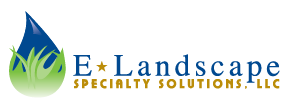Five Types of Playground Surfacing
 Annually, more than 200,000 kids injured are injured on playgrounds across the nation. Many of these injuries occur as a result of falls to the ground. A playground surface should be designed to provide protection for children as they swing, slide, climb, jump and run. This requires materials that have the proper thickness to provide sufficient depth and absorb shock.
Annually, more than 200,000 kids injured are injured on playgrounds across the nation. Many of these injuries occur as a result of falls to the ground. A playground surface should be designed to provide protection for children as they swing, slide, climb, jump and run. This requires materials that have the proper thickness to provide sufficient depth and absorb shock.
Facilities can choose from a variety of ADA-approved and non-approved surfaces. Work with your installer to evaluate safety factors for the different types of playground safety options. A few factors you should consider when building your playground are:
- Playground location
- Height of the equipment
- Age of the children
- Drainage potential
- Average grade of the surrounding area
- Ambient temperature
- Maintenance requirements
- Life expectancy
ADA Approved Playground Surfaces
Poured in Place Rubber (PIP)
The PIP surface consist soft two layers– cushion and decorative. The first layer is made of clean, recycled tire rubber. The second decorative layer consist of high-quality EPDM or TPV granules. It comes in a broad range of colors and can be installed over concrete and asphalt.
PIP playground surfacing materials contain air pockets that create the shock-absorption qualities. It has a higher initial cost than most of the other surfaces. However, maintenance costs are lower and it is an easy to clean surface.
Rubber Tile System
Rubber tile installation options include standard tiles that are individually glued to the sub-base and Inter-Locking Tiles and both are available in an EPDM top or pigmented rubber surface. This system can be used indoors or outdoors, is easy to maintain and repair, and is commonly used for both interior exterior and exterior play surfaces. The tiles are available in various thicknesses.
Loose Fill Rubber
This material consists of clean, 100% recycled rubber tires. The resilient large rubber pieces provides the best shock-absorption properties of all the available loose fill surface options. Available in a wide range of colors, this playground surfacing material does not require top offs.
Some other qualities include:
- Does not attract animals or insects
- Soft to the touch
- Drains well
- Does not decompose
- Non-toxic
Other loose fill material options for your playground surfacing include sand, gravel and wood chips, but these materials do not meet ADA standards. Loose fill materials require daily raking to assure it maintains the proper depth to absorb impact.
Engineered Wood Fiber
If you have budget constraints, consider engineered wood fiber. Once installed and settled, the material forms a “knotted’ layer that can support a variety of mobility equipment, including crutches, walkers and wheelchairs. The surface must be raked on an ongoing basis and requires periodic toppings.
The material can be purchased in hardwood or softwood, and is nontoxic and free of chemicals, paints and additives.
Synthetic Turf
Customers can have the look of nature for their playground environment without the need for watering. Choose between an installation process that includes infill worked among the blades to keep the blades from flattening or a turf that does not require an infill solution.
The advantages of synthetic grass for playground surfacing include:
- Offers a cooler surface than most unitary (PIP and Tiles) playground surfaces
- Anti-microbial and allergen-free compared to natural grass
- Drains quick after a rainfall
- 100% recyclable
Synthetic turfs, which cost more than loose fill surfaces, provide cushioning, durability and adequate drainage.
You should also compare the cost of installation for the available options. Today, customers have a wide range of playground surfacing material to consider.



